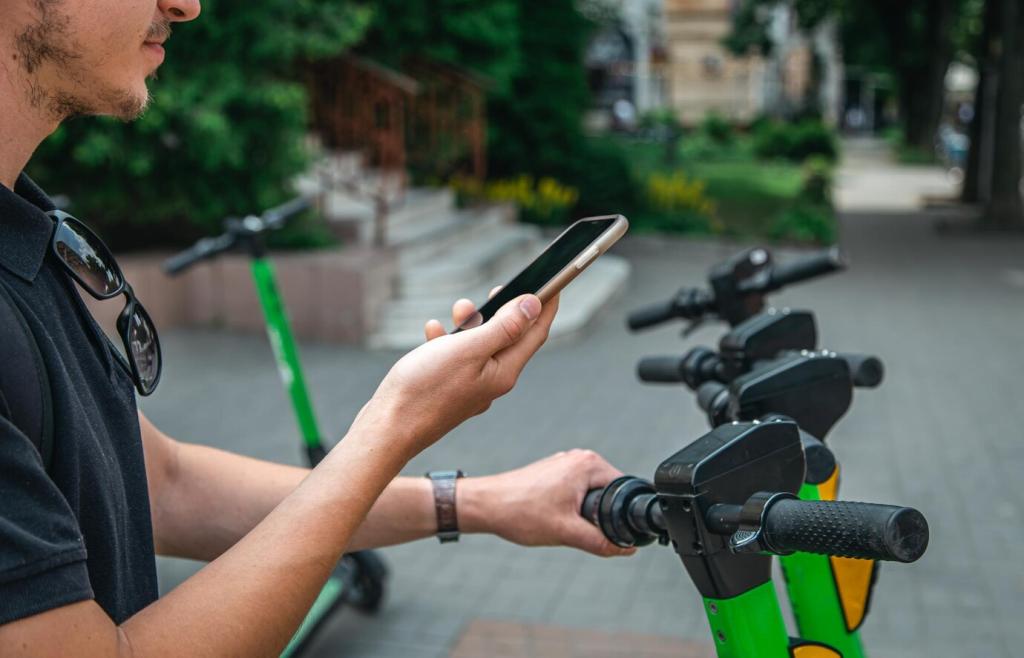Chosen theme: Voice Recognition Features in Mobile Applications. From hands-free convenience to accessible design, voice unlocks faster flows and richer experiences on the go. Explore how it works, what great voice UX looks like, and where it is heading. Share your favorite voice moments in apps, and subscribe for fresh insights on building intuitive, trustworthy voice-first experiences.


How Voice Works on Your Phone
Your microphone captures a waveform, sliced into frames and transformed into features like mel spectrograms. Acoustic and language models predict phonemes, then words, while a decoder balances probabilities. The result becomes text your app can parse into intents, slots, and actions.
How Voice Works on Your Phone
A tiny always-on model listens for a wake phrase, such as Hey Google or Hey Siri, using low-power hardware to preserve battery life. It aims to minimize false accepts and rejects, so your app responds when intended, not to random kitchen clatter.
Designing Intuitive Voice UX
People rarely guess the exact phrasing your app expects. Seed the experience with examples, hints, and context-aware suggestions. Use concise verbs, consistent patterns, and confirmation prompts. Give users a visible list of suggestions, encouraging them to try, learn, and grow confident quickly.


Multiple microphones help isolate your voice through beamforming, while voice activity detection trims silence and background sound. Add spectral subtraction and neural denoisers to improve clarity. Together, these steps raise recognition accuracy even in clattering kitchens and echoing hallways without annoying delays.

Inclusive voice means training with diverse speakers, dialects, and ages. Augment data with reverberation, background noise, and speed variations. Evaluate performance across groups, not just averages. Celebrate differences in pronunciation and vocabulary, and invite your community to contribute examples to close gaps.

Voice interactions must feel instant. Optimize models with quantization and distillation, and stream partial transcripts to show progress. Balance CPU, DSP, and NPU usage to protect battery life. Measure end-to-end latency, not just model time, to catch UI or network bottlenecks early.
Privacy, Security, and Trust
On-Device Models and Data Minimization
Where possible, recognize speech locally, store transcripts temporarily, and discard raw audio after processing. Offer an easy setting to turn off retention entirely. The less you collect, the less you must secure, and the more confident privacy-conscious users will feel using voice daily.
Consent, Indicators, and Clear Controls
Always ask permission before listening, and pair requests with honest explanations. Show visible indicators while the mic is active. Provide simple toggles for wake word sensitivity, history deletion, and cloud processing. Transparency reduces fear, leading to deeper engagement and reliable, long-term adoption.
Spoofing, Liveness, and Adversarial Risks
Defend against replay attacks with challenge-response, device pairing, or speaker verification. Detect synthetic voices and unusual frequency patterns. Monitor for adversarial prompts that hijack commands. Security must be quiet, fast, and reliable so legitimate users feel protected, not burdened.


Accessibility and Empowerment Stories
Hands-free should mean complete journeys, not partial steps. Allow launching, searching, filtering, and confirming with voice. Large visual feedback and haptics reinforce success. When voice falters, offer quick alternatives that do not erase progress, honoring the user’s effort and preserving precious time.
Accessibility and Empowerment Stories
Voice works best alongside touch, visuals, and haptics. Let users speak to select, tap to refine, and feel subtle vibrations as confirmation. Multimodality reduces cognitive load, supports different abilities, and fits more contexts, from driving to cooking to walking with bags in hand.

Testing, Analytics, and Continuous Improvement
Log anonymized intents and error causes rather than raw audio whenever possible. Offer opt-in voice sample sharing for quality improvements, with clear benefits and easy revocation. Aggregate data by scenario to uncover misrecognitions hiding behind overall success rates.
Testing, Analytics, and Continuous Improvement
Small wording changes can yield big gains. Test different prompts, confirmation styles, and fallback messages. Measure task completion time, undo rates, and user sentiment. Close the loop by promoting winners quickly, then retest regularly as environments, devices, and expectations change.
Future Horizons for Mobile Voice
Edge Models and Personalization
Compact transformers on phones enable personalized vocabularies, custom wake words, and adaptive pronunciation without sending data away. Federated learning may fine-tune models privately. Expect smoother experiences that feel uniquely yours, even in airplanes, elevators, or dead zones with no connectivity.
Multilingual Understanding and Code-Switching
Real conversations cross languages mid-sentence. Next-generation models detect language on the fly, preserve named entities, and honor local idioms. Apps that embrace code-switching will feel natural to global users, extending voice beyond narrow command sets into everyday, expressive communication.
Beyond Commands: Voice as Presence
Voice carries emotion, intent, and rhythm. Future apps may sense urgency, fatigue, or excitement and adapt accordingly, always with consent. By listening respectfully, they can de-escalate errors, pace tutorials, and create moments of delight that feel almost like companionship.
